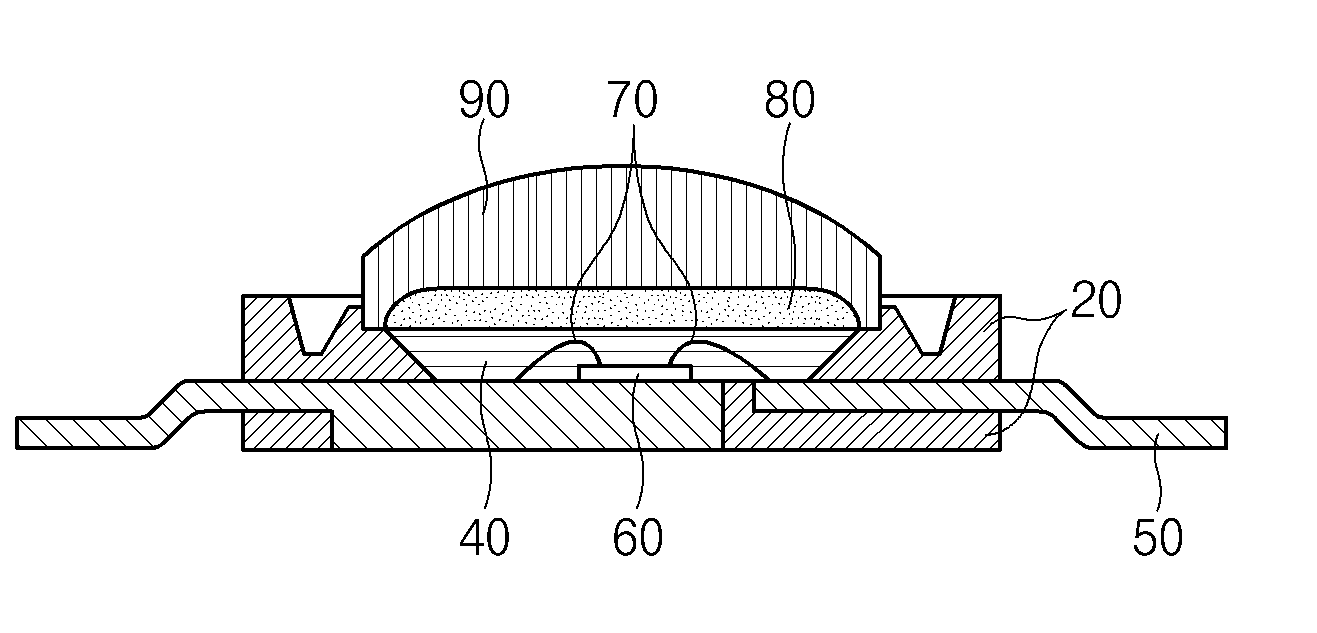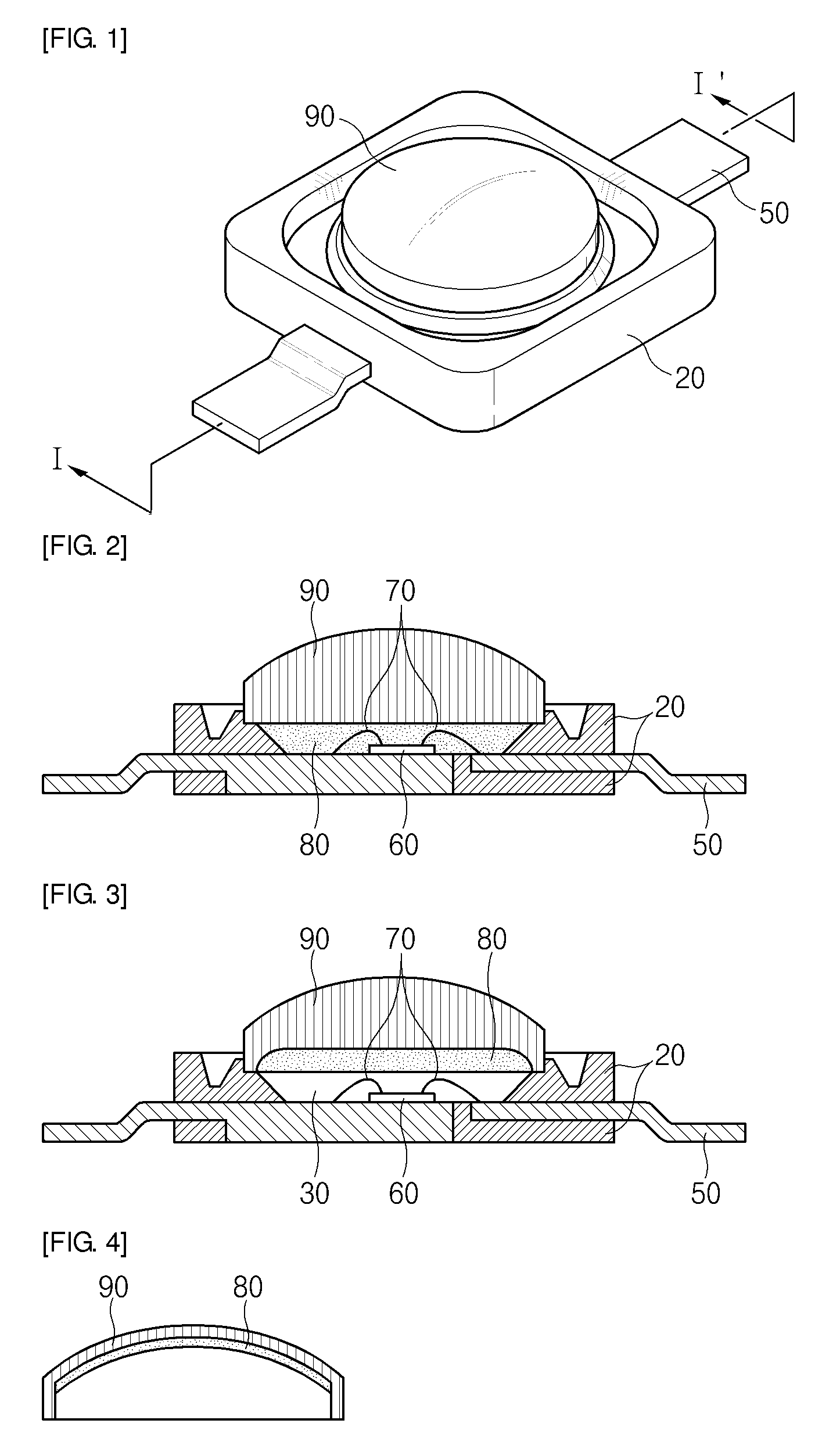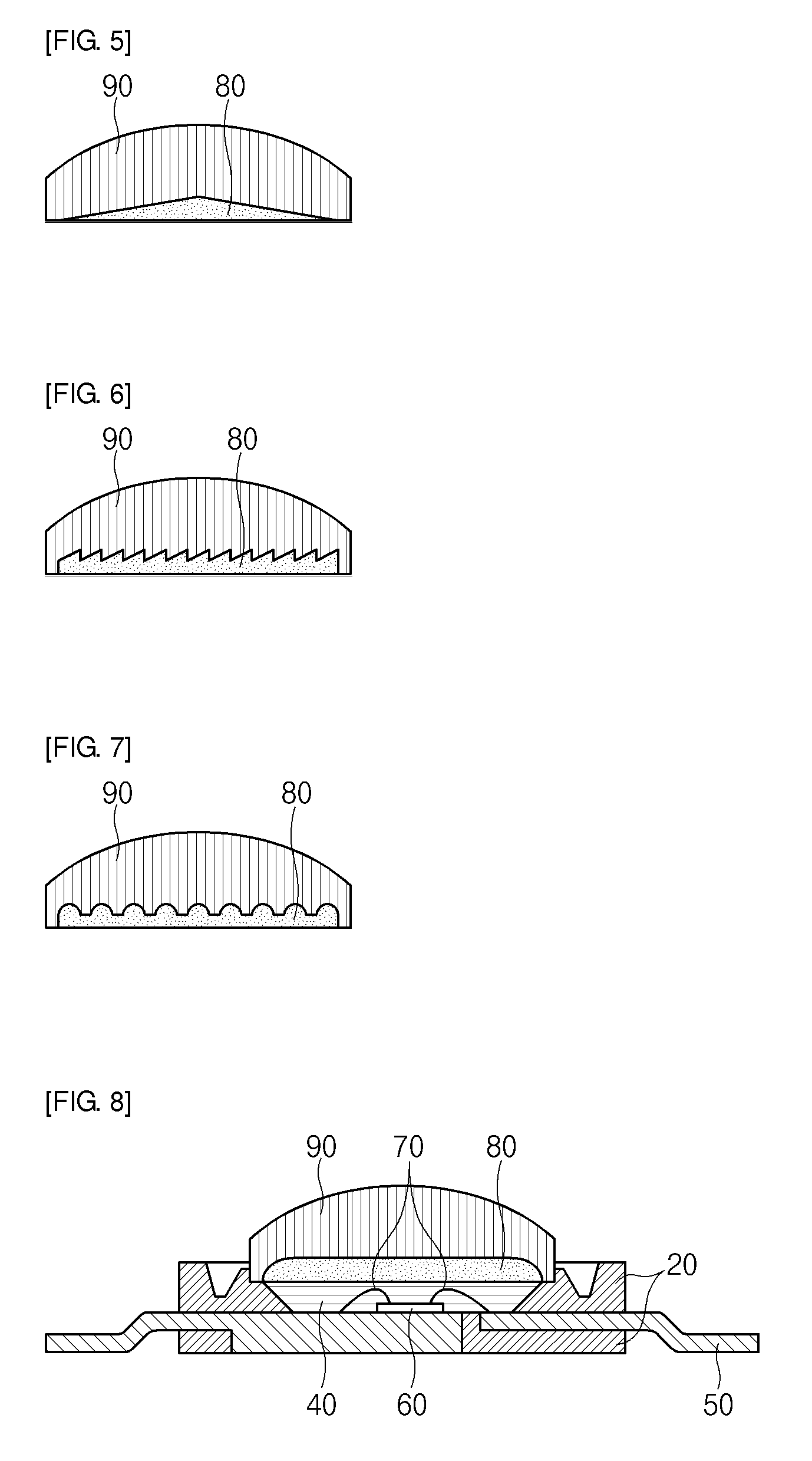Surface mounting device-type light emitting diode
- Summary
- Abstract
- Description
- Claims
- Application Information
AI Technical Summary
Benefits of technology
Problems solved by technology
Method used
Image
Examples
first embodiment
[0033]Referring to FIG. 3, an SMD-type LED according to a first embodiment of the invention will be described in detail.
[0034]FIG. 3 is a sectional view of the SMD-type LED according to the first embodiment of the invention.
[0035]Referring to FIG. 3, the SMD-type LED according to the first embodiment of the invention has a package 20 having a cavity formed in the central inner portion thereof. The package 20 has an emission window formed on a predetermined surface thereof such that light is easily emitted through the emission window. On the package 20, a lens 90 is positioned.
[0036]The surface of the lens 90, which is adjacent to the emission window, is formed to have a groove which is concave toward the lens 90. The concave groove of the lens 90 serves to define a formation region of a phosphor-mixed layer to be described below.
[0037]In this embodiment, it is shown that the concave groove of the lens 90 is formed with a curved surface. Without being limited thereto, however, the co...
second embodiment
[0050]Next, a second embodiment of the invention will be described with reference to FIG. 8. However, the descriptions of the same components as those of the first embodiment will be omitted.
[0051]FIG. 8 is a sectional view illustrating the structure of an SMD-type LED according to the second embodiment of the invention.
[0052]As shown in FIG. 8, the SMD-type LED according to the second embodiment has almost the same construction as the SMD-type LED according to the first embodiment. However, the SMD-type LED according to the second embodiment is different from that of the first embodiment only in that liquid resin 40 is filled inside the package 20 having the LED chip 60 mounted therein.
[0053]Since the SMD-type LED according to the second embodiment also has the phosphor-mixed layer 80 formed on the surface of the lens 90 adjacent to the light-emission window of the package 20, it is possible to obtain the same operation and effect as the first embodiment. Further, the LED chip 60 a...
PUM
 Login to View More
Login to View More Abstract
Description
Claims
Application Information
 Login to View More
Login to View More - R&D
- Intellectual Property
- Life Sciences
- Materials
- Tech Scout
- Unparalleled Data Quality
- Higher Quality Content
- 60% Fewer Hallucinations
Browse by: Latest US Patents, China's latest patents, Technical Efficacy Thesaurus, Application Domain, Technology Topic, Popular Technical Reports.
© 2025 PatSnap. All rights reserved.Legal|Privacy policy|Modern Slavery Act Transparency Statement|Sitemap|About US| Contact US: help@patsnap.com



